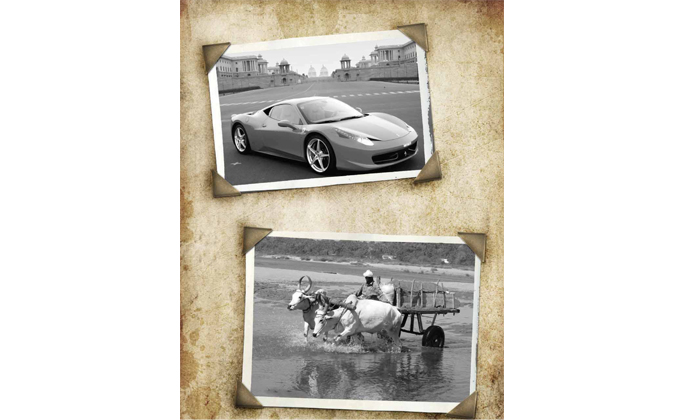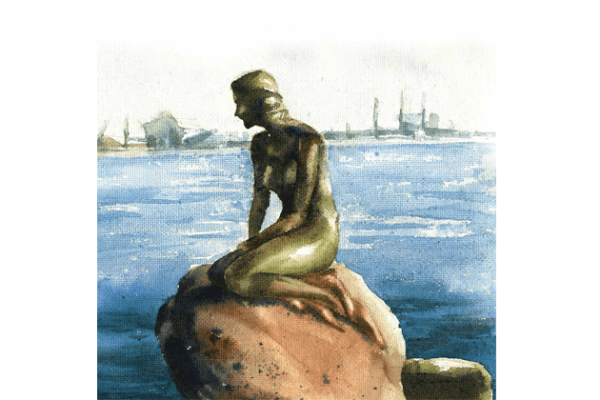This is not a review. It shall not offer a discursive, exacting dissection of the form, shape, content and intent of Siddhartha Deb’s new book of essays on the emergence of a post-globalisation, post-liberalisation modern India, intriguingly titled, ‘The Beautiful and the Damned’. What this article purports to do, is to develop the themes Siddhartha has brought forward in this controversial and acclaimed anthology – the slick, shining veneer of a flattened world where lines keep intersecting and cultures bleed into each other, class and status differentiators apparently cease to exist and society in general begins to propel itself towards one intended idea of welfare and civilizational growth, while underneath the effervescence, a darker, more feral and disturbing geometry of lives, rural and urban, landscapes and social structures continue to seethe violently, unsure of direction or deliverance.
“Is it therefore a damned/doomed generation, hurtling super-fast towards its own gradual spiritual extinction?”
This then, is the ‘beautiful’ and the ‘damned’ of Deb’s book; a spiralling juxtaposition of several Indias, throbbing for existence and identification as its true face, each relevant, mildly mutant, apprehensive and hopeful, simultaneously, of the future, and of their role in the making of the next epoch for the country. These two metaphors represent myriad identities, almost impossible to capture in the breadth of one essay, or even one book – the average middle-class boy, hooked onto dollops of American cable television in his after-hours, even as he gorges guidebooks and special ‘prep-classes’ by the gallon, to forcefully fit into the general ‘MBA dream’ of lush campuses, extraordinary business acumen and grand, hefty pay packages, so sweetly promised by the Indian Management institutes at the zenith, or by any of its cut-price, quick-fix, low-cost avatars; or the nattily dressed Indian family, that must now necessarily arrive at a mall every weekend, buy a little, browse a lot, and then tuck into a pizza or fried chicken, with fork and spoon perfectly held, hopeful that they too are now a part of the ever-burgeoning middle class, reborn through the magic of globalisation, call centres, off-shore KPOs and the constant economic ‘flattening’ of the world; the call centre exec, who despite his humble Indian origins, can now boast of a new, smarter life, shinier, baggy jeans, tees, fitted shirts, gelled hair, visits to nightclubs, the latest hip-hop music in his ears, as he drives his bike and of course, an ‘english’ name and then the constantly increasing alienation of India’s rural populace, with the high incidence of farmer suicides, land aquisition agitations, terrorism and nihilism on the boil, as indecipherable as ever, and the over-congestion of India’s small towns by a gaudy, ugly parade of easy, economically simpler versions of the vices and wares of the big cities – beauty parlours, dance/music workshops as gateways to reality shows, plastic surgery and weight reduction clinics, mini-nightclubs and even stronger penetration of cable television wiring.
Undoubtedly, we are looking at a complex map that stretches backwards and forwards into history, locked in by the aspirations of a new generation, that unlike at any other time or era, wants its own private piece of the ‘live-earn-spend-splurge-save-earn more pie’, and is prepared to go to any lengths for it – migrant workers, IT professionals, traders, businessmen, peasants, tycoons and waitresses busy, with various degrees of conviction, making their own lives, fresh with hope, blinded by the rainbow of opportunity, eager to succeed at any cost.
Is it therefore a damned/doomed generation, hurtling super-fast towards its own gradual spiritual extinction? Is the froth and glitter that brims over across India’s metropolises merely ephemera, shorn of all purpose or movement? One cannot entirely agree with Deb’s argument, that paints both sides with over-clarity, in stark, black and white, overlooking the intersections, ambiguities and ambivalences, that define this phenomenon; for the average man/woman on the street this is his chance to become all that was denied, for decades, to reinvent and recreate identity and form, to capture a sliver of his dreams and recast himself in a role/making of his own choice – even as the everyman worker/operator/guide/hostess/bartender escaping from his ordinary origins and roots, begins to claw out his private utopia, insignificant and shallow, as it might be, it is indubitably a celebration of hope and of a civilization on the move. This assertion of the self, of leaving a personal signature on the world, in any colour, lurid or otherwise, is as much a triumph of the spirit as it is, the complicated machinery and under-growth of globalisation.
Globalisation is a strange, many-hued leviathan; it eats, gorges, devours cultures and sentiments, sweeping across the mindscape like a tsunami, claiming all in its approach, while it also rebirths, rearranges and realigns societies, their shape and position, creating new roads and causeways, changing the trend and movement of a generation. As Deb writes, “As I made my way back from the steel factory through a series of puddles, I needed to take a piss. There was only one other person visible, a man walking in my direction but some distance away. I urinated against a brick wall, feeling slightly embarrassed. I heard the man come closer and expected him to walk . . . on but I could feel him stop when he reached me.” The man turns out to be Amit Mishra, lately of Faizabad in Uttar Pradesh, a former clerk at large, in search of employment.
She’s a pretender, too: at a coffee shop, she’s at a loss with the menu, an “alien document”, not having studied it as she has the one at Zest, in order “to advise customers on what mix of drinks, appetisers and entrées to order.” To reach her place of work, she must go each day from “North Campus” to the “Central Secretariat”, her “journey across these layers of history” involving “two hours of travelling, 30 rupees in fares, and three modes of transportation”. Esther lives in a flat in a suburb with her sisters Mary and Renu; the latter grows plants, “aloe vera, spinach, and what Renu calls ‘Naga coriander'”, thereby investing Delhi with a “touch of Manipur”.
The paragraph quoted is a poignant piece on a north-eastern waitress, propping herself up at fancy diner in Delhi’s land of the rich and famous. Indeed, it is difficult to answer any of the questions Deb has raised; like other scholars/writers/journalists before him (Arundhati Roy, Thomas Friedman) who’ve written extensively on globalisation and its constituents, the author would prefer to remain an interested third-party, only objectively viewing the ‘circus’ as it were, but is drawn in further, with the passing of the narrative, having as most do, a shared portion in this churning of history, that he has chosen to archive.
It is impossible to completely encapsulate a theory for globalisation and the place and purpose of Asian countries like India, in this tectonic shift; in a country where Bollywood and cricket dictate the mood of the masses, where faux hunger-strikes and makeshift mahatmas are born every day, only to hot-wheel off in the latest limo, once the dharna (or woodstockian fantasy) is over, where India inc pushes the bull ever harder, while farmers and agrarian economies are yet to find a firm footing, where beneath the spires of concrete and steel, information technology and intelligence analysis, older, rotting, messier alternate realities continue to prosper, sometimes, even happily, indeed, no answer is forthcoming; as is no permanent, absolute opinion or dissertation, where we are and where we really headed; Much like V S Naipaul’s ‘India: A Million Mutinies Now’ paraphrased an era a decade ago, in a tone that was subjective, emotional, oddly hopeful and melancholic at the same time, it is difficult for an author to stand and comment on the making of one set of dreams, on the anvil of another – just as it is for this, commentator.














